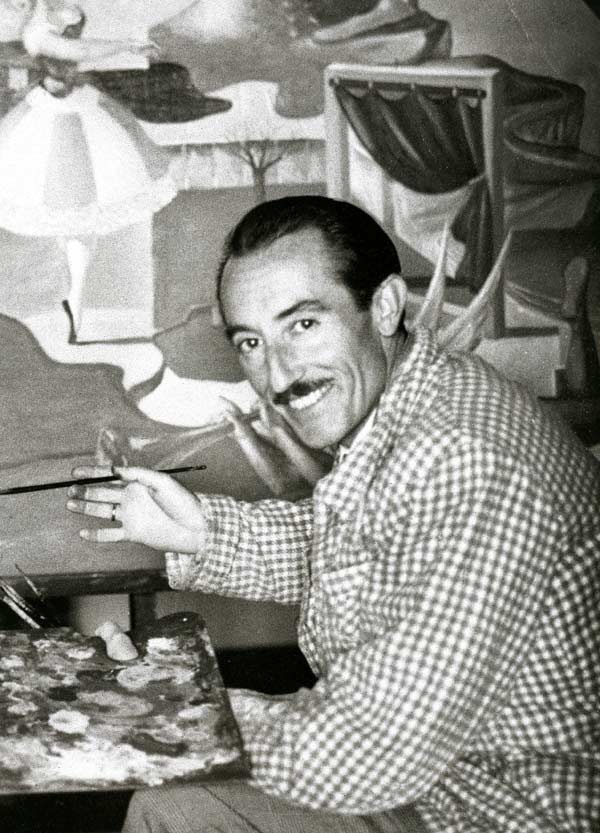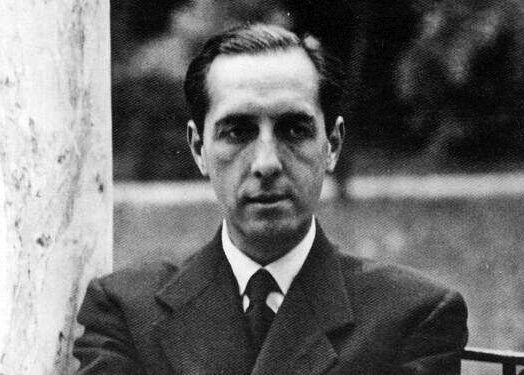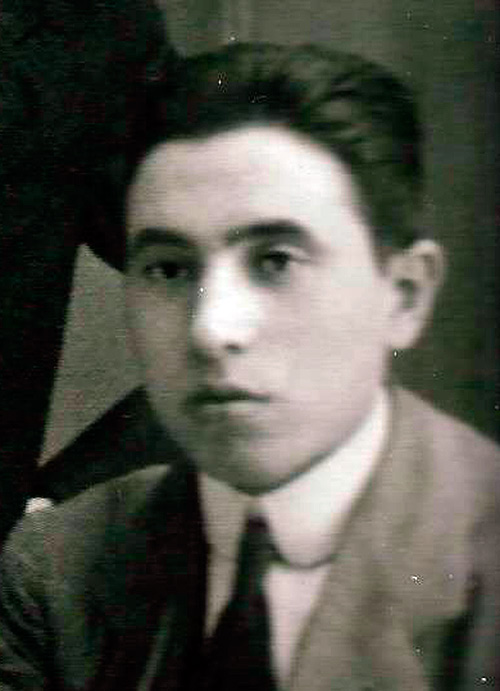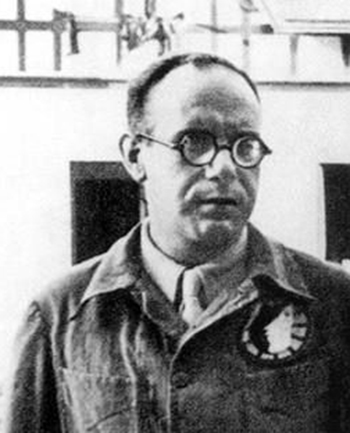Actor, collaborator and scholar of the traveling theater group La Barraca founded and directed by his friends Federico García Lorca and Eduardo Ugarte (1932 – 1936); he graduated in Biology and also worked as a dentist; he was a scientist, humanist, acting professor of Anthropology and surrealist painter. He was born in León on June 11, 1912 and died in the same city on June 27, 1994. He is the author of the invaluable and highly documented book La Barraca. University Theater, published in the Biblioteca de la Revista de Occidente in 1976 with a prolog by Rafael Martínez Nadal, where he pours out his memories about the four summer tours in which he participated touring the lost towns and villages of the Empty Spain during the hopeful period of the Republic. A multiple personality and full of concerns forged in the Residencia de Estudiantes (Students’ Residence) and under the spirit of the Institución Libre de Enseñanza (Free Teaching Institution), who had to face some of the most tragic episodes of the history of the twentieth century in Spain. Despite such hustle and bustle and variety of interests, his work is consistent with the conviction that human treatment should prevail over ideologies. During the dictatorship he was a prime example of internal exile.
“Federico was twelve years older than me. When I met him, he had already finished his studies and I was beginning my life as a medical student”. Sáenz was the only person from León who belonged to La Barraca for four years.
Sáenz de la Calzada belonged to a progressive family that provided him, like his siblings, with a liberal education that culminated with his admission to the Residencia de Estudiantes, a decisive event in his life that opened his world to unthinkable spheres. “On a daily basis, we residents would bump into Ortega, García Morente, Orueta; sometimes Unamuno, Eugenio d’Ors and other personalities, who simply filled our incipient world with their presence of passion and curiosity. Moreno Villa took us every Saturday to the Prado Museum to explain the secrets of painting through the various historical styles. Countless poets, such as Federico García Lorca, Machado, Juan Ramón, Alberti, Emilio Prados, Guillén, Gabriel Celaya and others were sneaking us into the lyrical side of the arts, in an insensitive way,” he recounted in 1982 in an article in El País to commemorate the centenary of the birth of Alberto Jiménez Fraud.
But among all his new knowledge, it was his meeting with Federico García Lorca that determined his dedication to theater and painting. “Federico was twelve years older than me. When I met him, he had already finished his studies and I was beginning my life as a medical student”. Sáenz was the only Leonese who belonged to La Barraca for four years. In 1933, they performed in León province where the company represented Fuenteovejuna and The Land of Alvar González. Sáenz de la Calzada used to recall that the actors stayed at the Hotel París. “The next morning, when we went down to breakfast, Federico confidently asked the lady to serve us a `hot chocolate chorpatélico with a few drops of ronronquelia*.’ It’s not hard to imagine the poor waitress’s face [when hearing this strange words with no meaning in Spanish],” he used to say.
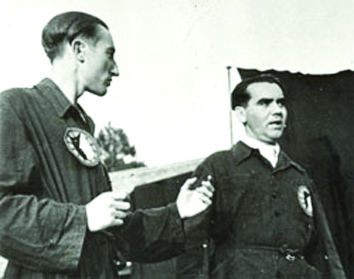
After the Civil War, the actor was bewildered, not knowing where to go, fearful that his friendship with Lorca and his membership in La Barraca could get him into trouble. To escape the uncertainty he chose, among all the vocations that had manifested themselves, that of the theater. Thanks to the actor Luis Escobar he channeled his professional life in those dangerous years of the first postwar period. Dionisio Ridruejo had commissioned Escobar to create a kind of reverse La Barraca: a national theater company focused on the representation of autos sacramentales with which to tour Spain. Luis Escobar, in need of actors, incorporated him and in a way saved his life at a very compromising moment.
Sáenz de la Calzada was also a notable painter influenced by José Caballero and Giorgio de Chirico.
He then lapsed into a silence that he barely broke on the odd occasion to recall the Spain of the Republic in which he was educated. “There is so much that I owe to La Barraca (Federico, Ugarte, all my companions, the excursions on the old land of Spain) that everything should be clear, obvious, in the metacircuits of my memory, since everything has contributed – and so much! – to make my I acquire more prestige, that is, to make me more humbly humble, but, at the same time, more tensely vital […]. What La Barraca represented in the Spain of the Republic, was, constituted the highest milestone of my crossroads,” he writes in the prolog to La Barraca. University Theater.
(*) According to Ian Gibson (Lorca and the gay world), Lorca enjoyed inventing words, such as chorpatélico, anfistora, pirulino, ronronquélico, pollancón (awesome) and, above all, epente and epéntico, of which Mr Elepente was the prototype.
